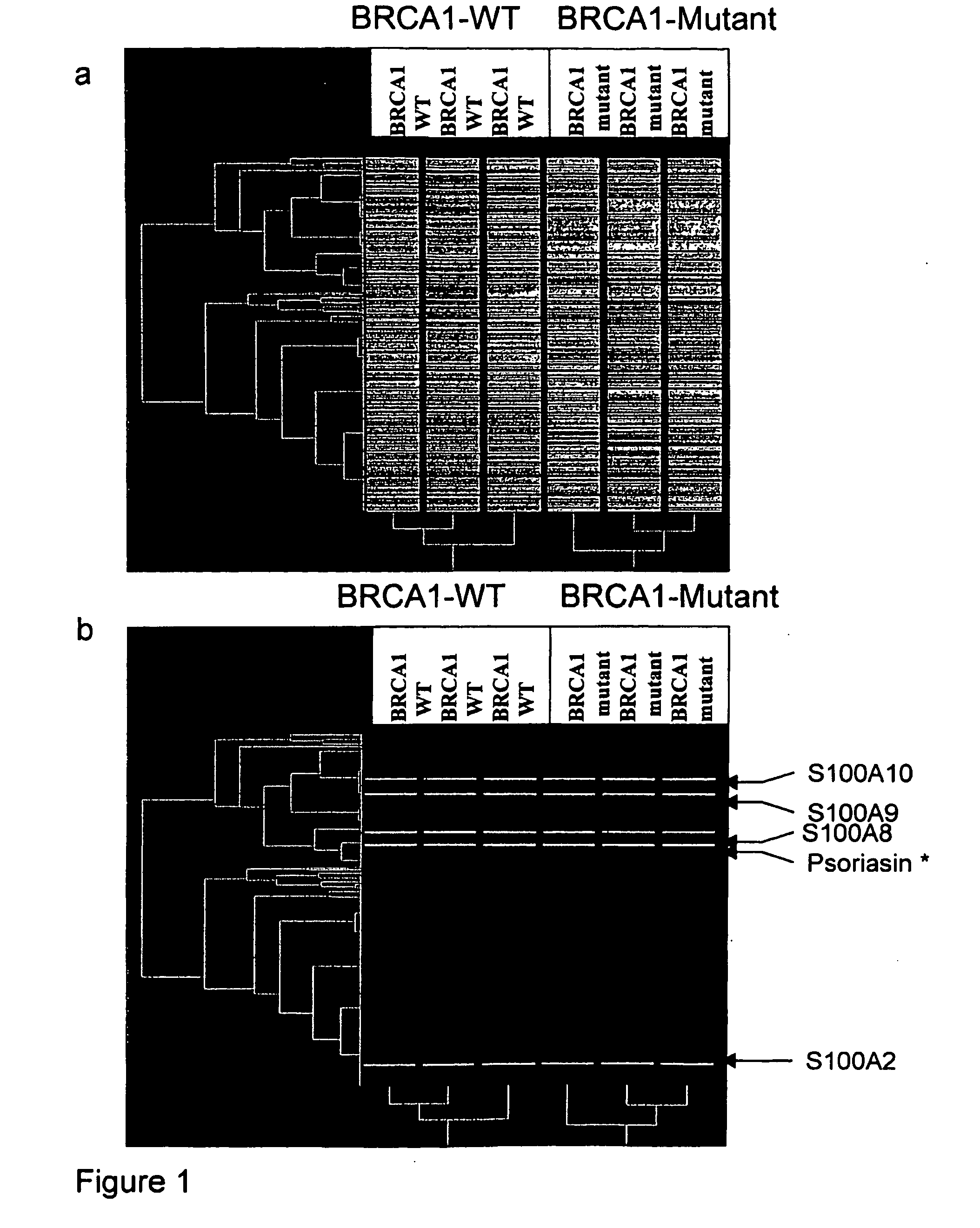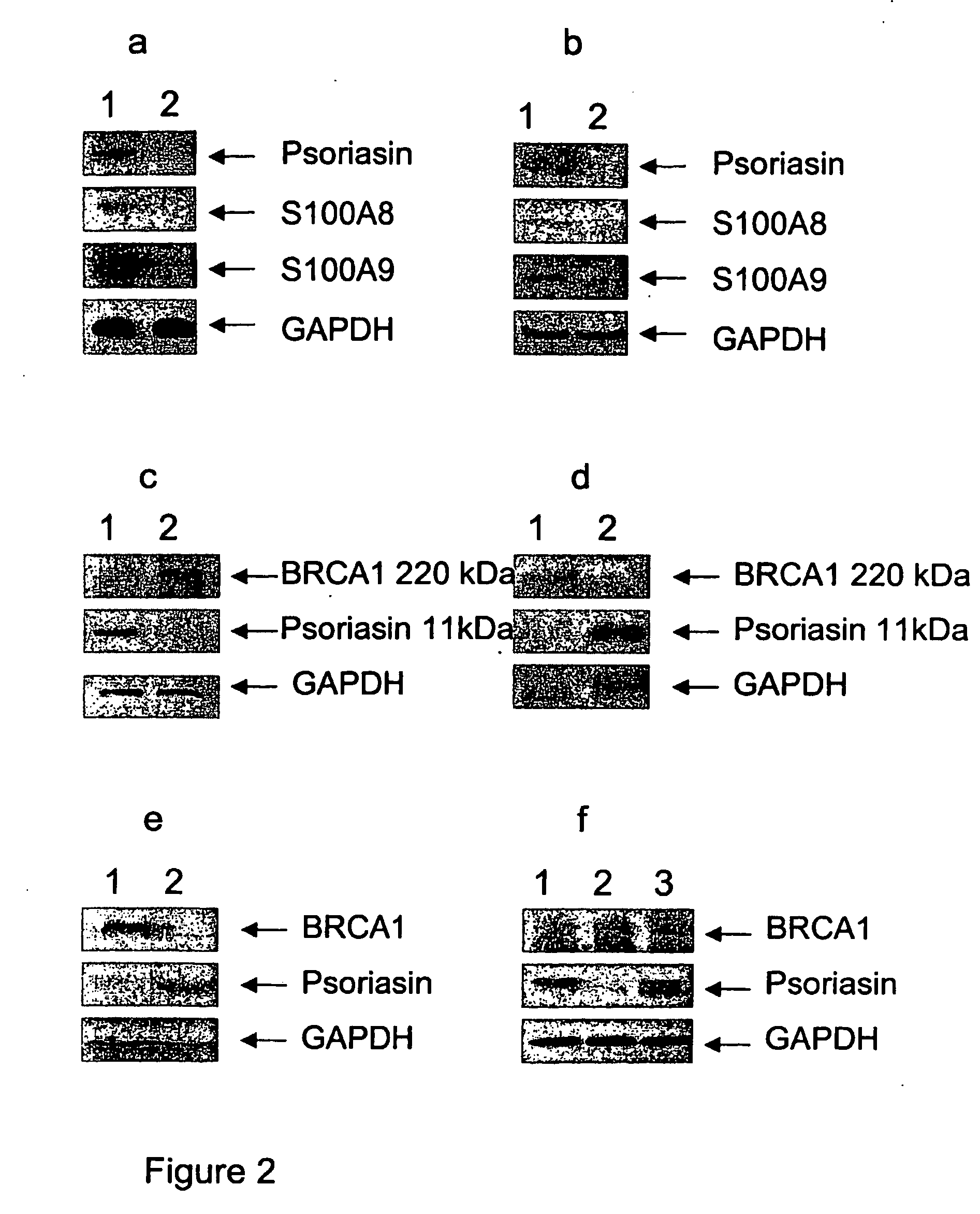Brca1 Markers
a technology of brca1 and markers, applied in the field of brca1 markers, can solve the problems of difficult design of rapid and effective means of assaying for each and every possible mutation, high cost and time consumption of test itself, and achieve the effect of increasing the efficiency of the chemiluminescent reaction
- Summary
- Abstract
- Description
- Claims
- Application Information
AI Technical Summary
Benefits of technology
Problems solved by technology
Method used
Image
Examples
Embodiment Construction
[0098]A microarray based expression profiling expression approach was used to compare gene expression profiles of cells containing functional or non-functional (mutant) BRCA1. The cell lines used were derived from the BRCA1-mutant HCC1937 cell line by stable expression of either wild-type exogenous BRCA1 (HCC-BR116) or an empty vector (HCC-EV1). Total RNA was extracted in triplicate from each cell line, biotinylated, and hybridised to the Affymetrix human genome U133 Plus 2.0 representing 47,000 known transcripts and expressed sequence tags. Analysis of the microarray data revealed 303 genes that exhibited BRCA1-dependent expression changes. Unsupervised hierarchical clustering of genes based on their expression profiles, and samples based on their expression signature was performed using Pearson correlation as the similarity metric resulting in 2-dimensional dendrogram. The clustering of samples or condition tree is shown vertically, and the clustering of genes or gene tree is show...
PUM
| Property | Measurement | Unit |
|---|---|---|
| pH | aaaaa | aaaaa |
| intragenic heterogeneity | aaaaa | aaaaa |
| radioactive | aaaaa | aaaaa |
Abstract
Description
Claims
Application Information
 Login to View More
Login to View More - R&D
- Intellectual Property
- Life Sciences
- Materials
- Tech Scout
- Unparalleled Data Quality
- Higher Quality Content
- 60% Fewer Hallucinations
Browse by: Latest US Patents, China's latest patents, Technical Efficacy Thesaurus, Application Domain, Technology Topic, Popular Technical Reports.
© 2025 PatSnap. All rights reserved.Legal|Privacy policy|Modern Slavery Act Transparency Statement|Sitemap|About US| Contact US: help@patsnap.com



